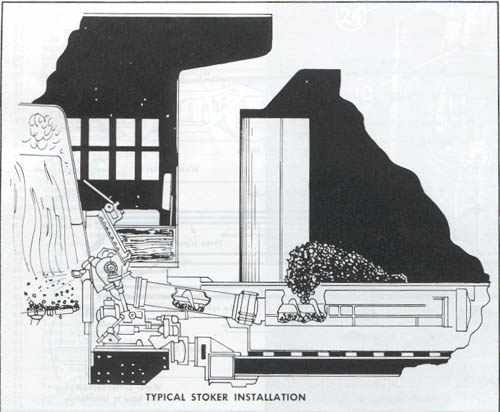Class 25 4-8-4: the condensing tender. Though the class was later rebuilt with regular tenders, with refinement this possible solution might be able to reduce the amount of water columns needed along the line(s) these steam locomotives use. Add an auxiliary tender to hold even more water and you can reduce the amount of water columns even further. Flexible piping will connect the auxilary cars carrying water to the locomotive.
...
It uses a conveyor belt to lift the coal from a small 'bin' (you could call it) up to a height that will allow the coal to fall into the coal car positioned beneath it. What can be done is a coal car (the type of coal car found on at least Trainz 2010 (CSX Bethgon Coal Car (something like that))) placed behind the tender, near the tender (I'll explain later), and the bottom is sloped to funnel the coal into a conveyor belt that will move the coal up above the sides of the car and dropped onto another conveyor belt laying at a slight upward angle, located on top of another car. The coal will be dropped onto as many conveyor belts as needed until it reaches the tender; where another conveyor belt, lying on an upward angle to drop the coal into the area of the tender where the coal was located. Each conveyor (except the one on the tender) will feature a small funnel to make sure as much coal as possible to continue on its journey to the tender. All the conveyor belts will be semi-permanently bolted onto each car, allowing them to be easily removed. On cars that carry water, and the tender, the place where the water fills the car or the tender is located offset from the center, which will prevent the conveyor belt from interfering with filling the tender or the car with water. The conveyor belts will be powered my electric motors, with the electricity being provided from some source. A generator is the most logical choice, but remenber: the amount of oil (which powers the diesel engine connected to the generator) available is going down, so something to make the belts move has to get its power must come from something other than oil. I don't know if the 'coal conveyor belt' is possible in the real world, so it's just a thought.
I want to see what everyone thinks about these solutions to reducing the coal towers and water columns needed to keep a steam locomotive moving.
Besides, whenever I'm at a place where I can ride behind a steam locomotive, I say that some of you might remind you of George 'Hannibal' Smith's well-known remark ("I love it when a plan comes together"): I love the smell of burning coal in the morning.


